*UPDATE*
Since this article went live, information has come forward that the K-4 mount that we received is not original but a replica. There are small differences which prevent this mount from being used in conjunction with its mating components.
Now that we are aware of the mistake, we are going to keep an eye out for an original. If anyone can be of help in this, please let us know.
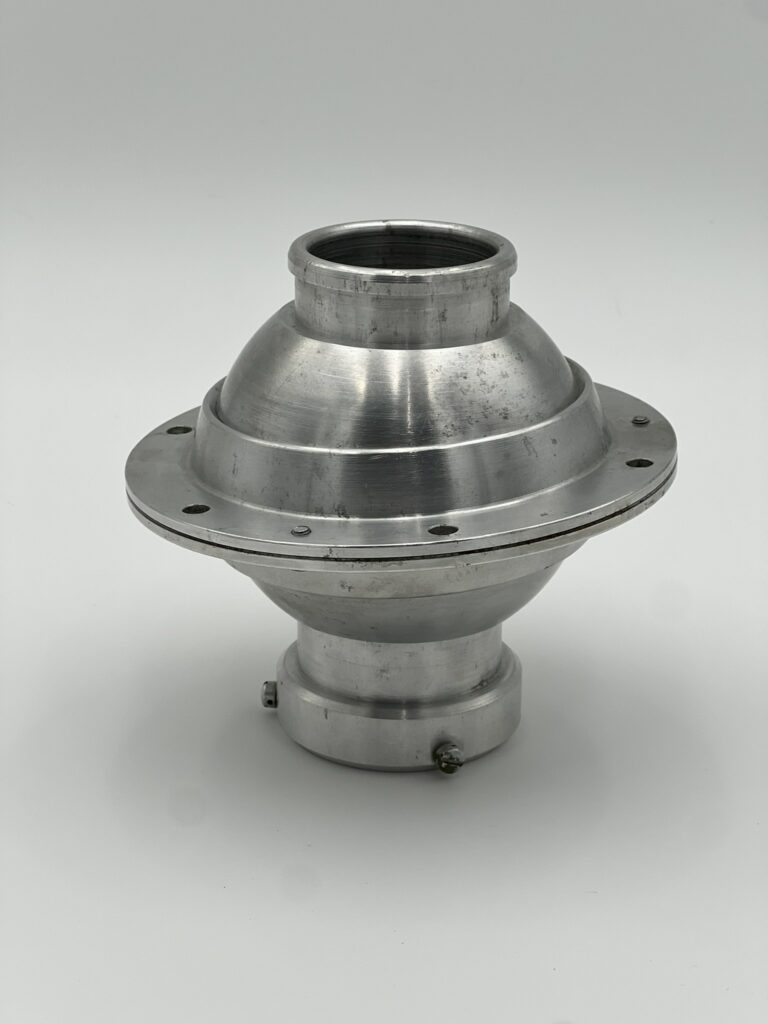
Every once in a while someone unexpectedly reaches out to us with something that we have been struggling to find for a long time.
This K-4 Mount was one of those parts.
The Type K-4 Mount was a ball type mount for .50 caliber MGs, being common amongst Boeing B-17Fs. The number of K-4s installed varied between production blocks and Lucky Thirteen, being a late-F, carried a single ball mount in her plexiglass nose.
As I began writing an update about this piece, I found myself going into more and more detail about B-17F nose gun emplacement history. Finally, I just had to stop and say “this deserves it’s own update.”
So, here it is.
Photo taken 15 April 2025.
Perhaps the defining characteristic of F-series B-17s is the nose compartment. Unlike the B-17G, whose survivors are prominent today, the B-17F lacked the large Bendix chin turret assembly under the nose, the result being an aircraft with distinctively smooth lines. However, said characteristic ultimately became its greatest weakness, as insufficient forward-facing armament gave way to a plethora of modifications, all made to account for this deficiency.
As noted in our Lucky Thirteen’s Turrets In Detail, Pt. 1 post:
Contrary to popular belief, US Army Air Corps theories about strategic bombing prior to the Second World War were not based on the idea that the bomber could defend itself. Rather, in the absence of radar technology, Air Corps Tactical School instructors postulated that modern bomber aircraft could approach their targets at such altitudes and speeds that they could hit their targets and egress before interception. A minor distinction but an important one. This theory was hotly debated and it certainly did not help that the technologies involved were low priority in US defense spending. As such, while France and Great Britain were experimenting with powered gun turrets as early as 1935, it was not until after the outbreak of war in Europe – and the introduction of early-warning radar – that the United States earnestly began researching powered gun turrets for its bombers.
Observation reports covering the vulnerability of bombers in the Japanese invasion of China and Spanish Civil War seriously troubled the War Department. After all, while the Boeing B-17 was over four years old, it was not ordered into mass production until the 1938 Munich Agreement. The big bomber was expensive and the possibility of it being useless was not easy to stomach. However, reports from Great Britain noted that German fighters eschewed rear attacks against Vickers Wellingtons due to their powered turrets.
These reports strongly recommended the US develop powered gun turrets based on the British model, with an influential report by LTC Grandison Gardner and MAJ Franklin O. Carroll suggesting that US bombers carry at least four turrets – one for the front, back, top, and bottom.
However, early-war fighters rarely attacked from the front and there was some question as to the feasibility of such tactics. Armament Branch of Materiel Command certainly felt this way. A series of tests conducted at Wright Field argued that the extreme closing speeds of two aircraft approaching one another in combat severely limited the trigger-time of both, making said threat hardly realistic. As such, they felt that there was little need to change the 1930s standard of a single .30 caliber MG in the nose as, should a head-attack occur, its greater rate-of-fire (than the .50 caliber MG) would theoretically be helpful.

A random assortment of bombs (mostly Dutch) are loaded aboard a B-17D of 19BG, based at the Del Monte pineapple plantation during the Japanese invasion of the Philippines.
Note the three .30 caliber MG ball mounts in the nose.

The .30 caliber nose gun is visible in the upper right socket aboard B-17F Avenger (41-24346, 301BG).
Note the cheek windows, an early modification designed to increase forward-facing firepower. This modification was standardized on B-17s bound for Europe even before the first combat strike (17 August 1942).
For heavies like the Boeing B-17 and Consolidated B-24, the .30 caliber MG had a series of ball sockets in the plexiglass nose. The idea was that the bombardier could move the relatively light weapon from socket to socket as needed. On the B-17F, the plexiglass was molded to feature a pair of prominent indentions for the upper two sockets, with a third socket mounted flatly on the lower right. This was standard on all F-series B-17s up through block F-40-BO.
The commencement of US strategic bombing operations over occupied-Europe presented a shock to both US and German airmen. The B-17 and B-24 were surprisingly resilient opponents and could be lethal if approached without caution. For example, on 27 January 1943 – the first strike against Germany proper – seven Luftwaffe interceptors were downed by aerial gunners, compared to the Luftwaffe downing three heavy bombers. (These are actual loss figures, not claims.) But it did not take long for the Luftwaffe to notice the frontal deficiency. The 8AF’s first combat death was killed by an impromptu head-on attack just four days after the first US heavy bomber operation. On 23 November 1942, head-on tactics standardized by Hptm Egon Mayer and OLt Georg-Peter Eder of JG2 saw their first large-scale use against US airstrikes.
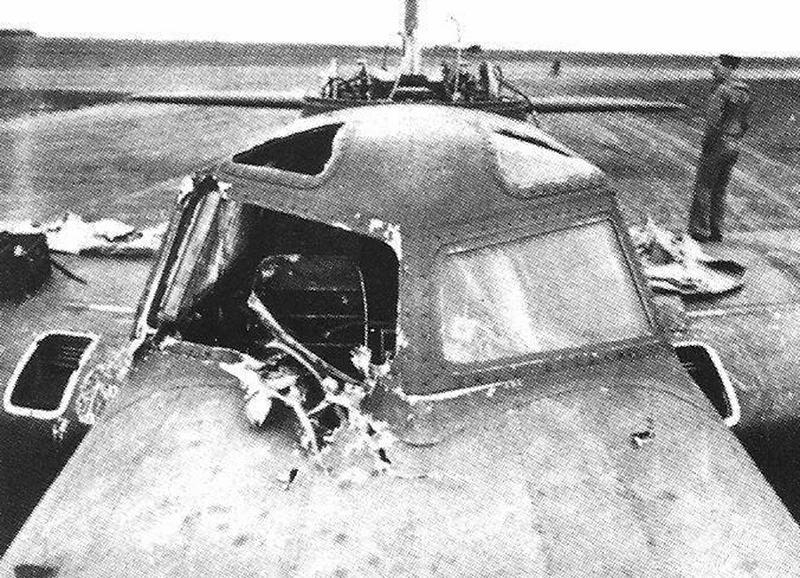
The cockpit of Johnny Reb (41-9089, 97BG) upon return on 21 August 1942.
With copilot 2LT Donald A. Walter dead and pilot 1LT Richard S. Starks seriously wounded, the bomber was flown home by bombardier 2LT Ewart T. Sconiers. Walter was the first combat death suffered by the US 8AF. Sconiers was shot down on 21 October 1942 aboard Johnny Reb II (41-24443) and taken prisoner; he died in captivity 24 January 1944.
Again, the disparity between prewar theories and doctrine should be noted here. Despite whatever fascination US airpower theorists had with strategic bombing, the reality was that there was no real doctrine – i.e., no tactics, no purpose-built equipment, no codification – until after the wa. This is why, for example, formations designed to take advantage of interlocking fire were not developed until after heavy bomber operations were already underway.
Developed by CO 305BG COL Curtis E. LeMay, the “box formation” completely disregarded previous phobias of anti-aircraft fire being the larger threat, and spaced out the bombers so that the aircrafts’ guns overlapped with one-another. Built upon sections of three-plane elements, the bombers were staggered in altitude and back from one another. The idea was that any fighter, attacking from head-on, would have to pass through a lengthy gauntlet of return fire. Said formation was first tested on the group level on 6 December 1942 and standardized throughout the entire 8AF on 13 January 1943.
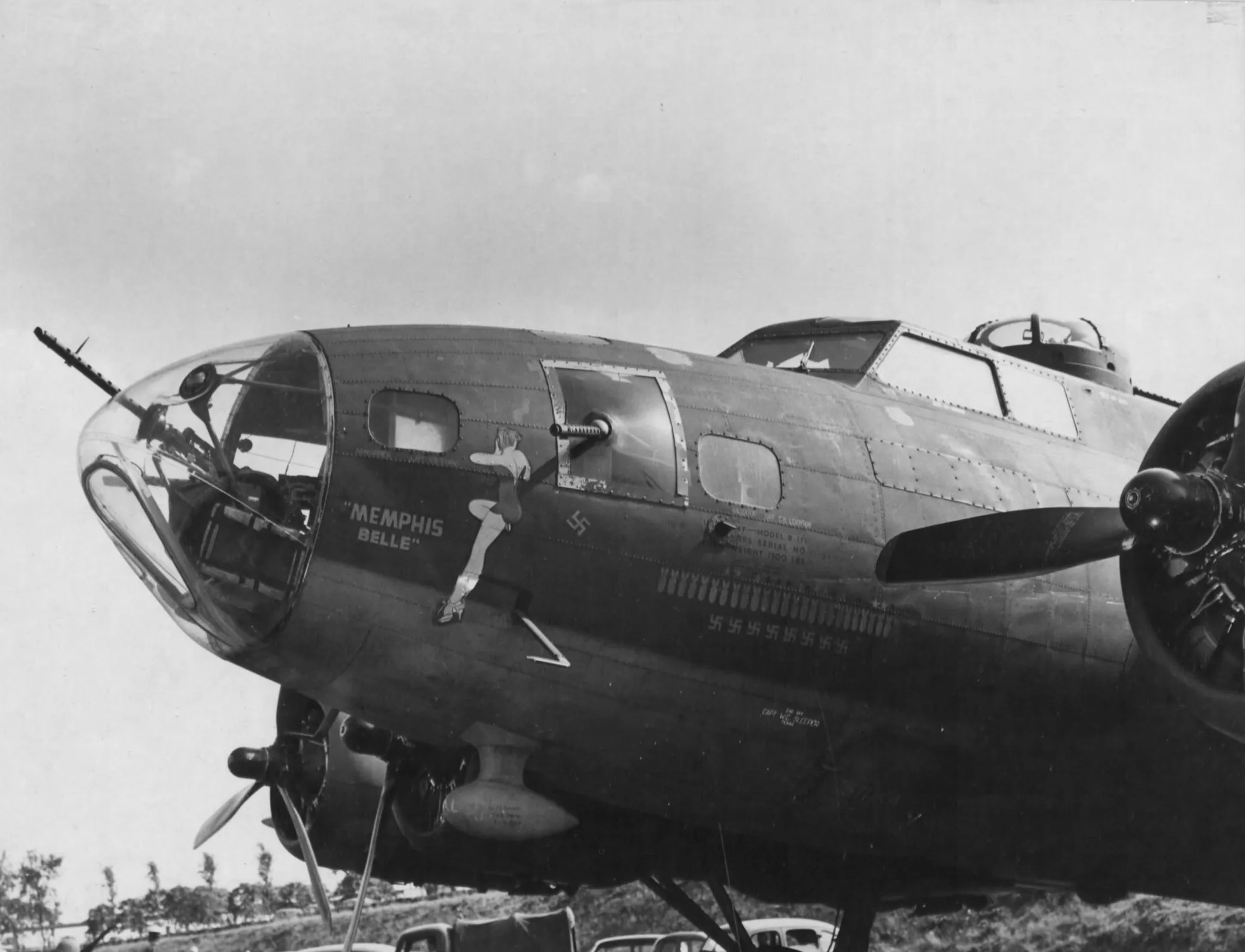
Memphis Belle (41-24485, 91BG), on a War Bond tour of the United States after completing her tour-of-duty.
With the exception of the lower ball, the upper two .30 caliber balls have been replaced with .50 caliber ones, with bracing added to support the extra recoil. While the .50 caliber MG might have had a slower rate-of-fire, the round itself was far more powerful.
This modification quickly became standard on B-17Fs with the early, dimpled nose arrangement. While she is today displayed with guns in both balls, in reality, Memphis Belle typically flew with a single .50 installed.
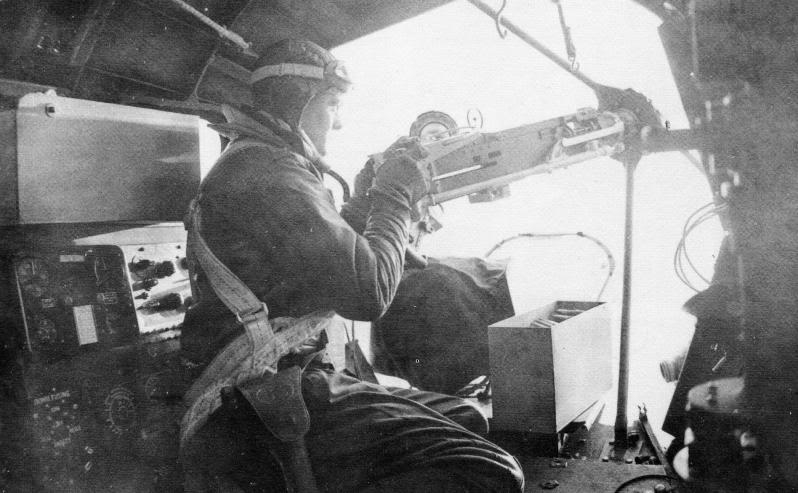
Another example of an early-B-17F modified by replacing one its .30 caliber ball sockets with a .50 caliber one, and bracing the mount. Note that only one of the ball mounts has been so modified.
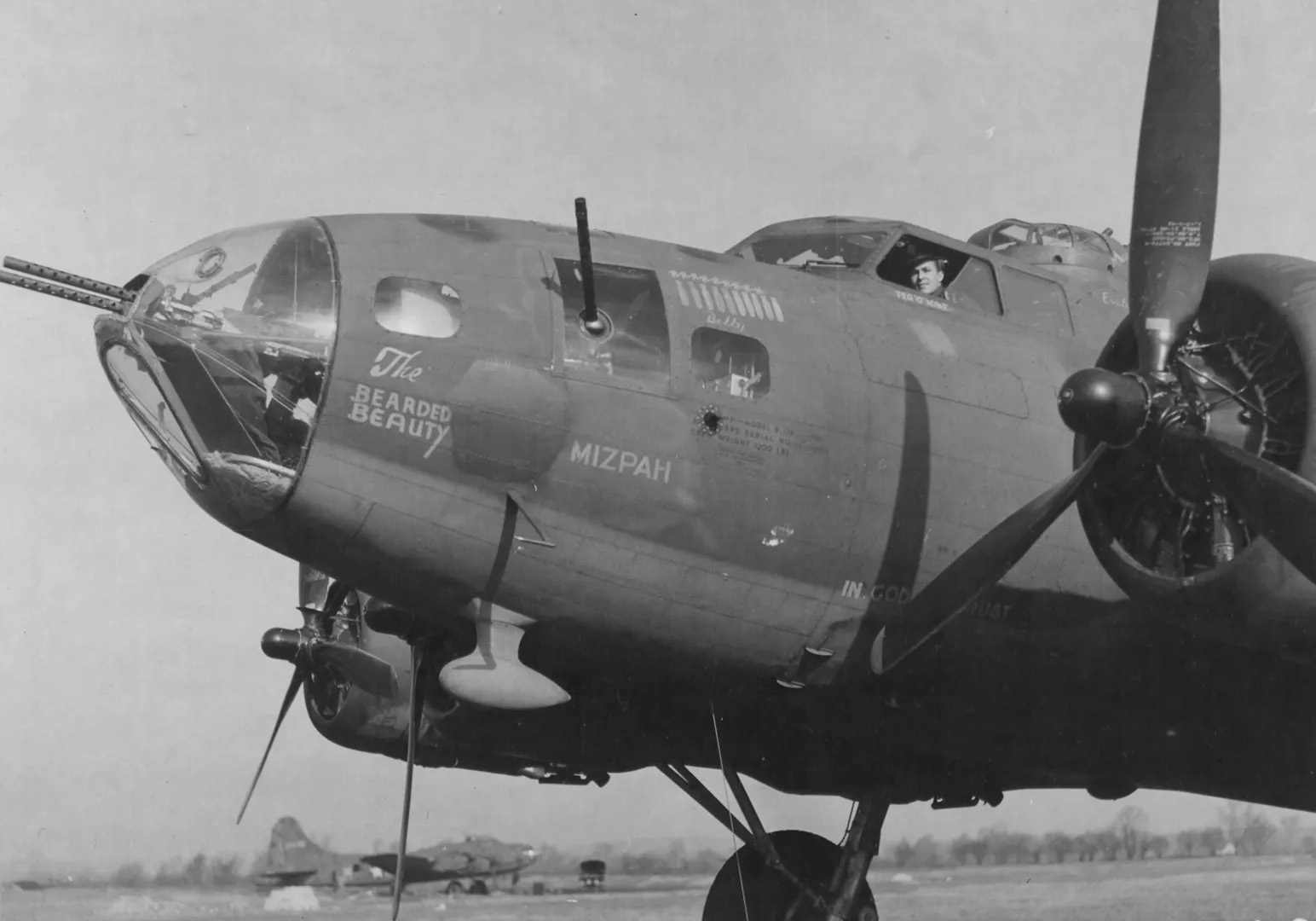
Bearded Beauty (41-24453, 91BG) shows another common modification on early-B-17Fs. Aircraft with twin-nose guns served as “destroyers,” flanking either side of the formation lead. Note that the bombsight and stabilizer have been completely uninstalled, with an armor plate being mounted in its place.
Mizpah is roughly translated as “lookout” in Hebrew, taken from Genesis 31:49: “The Lord watch between me and thee, when we are absent one from another.” In this context, it was a popular name for US aircraft. Bearded Beauty/Mizpah was lost over Schweinfurt on 17 August 1943.
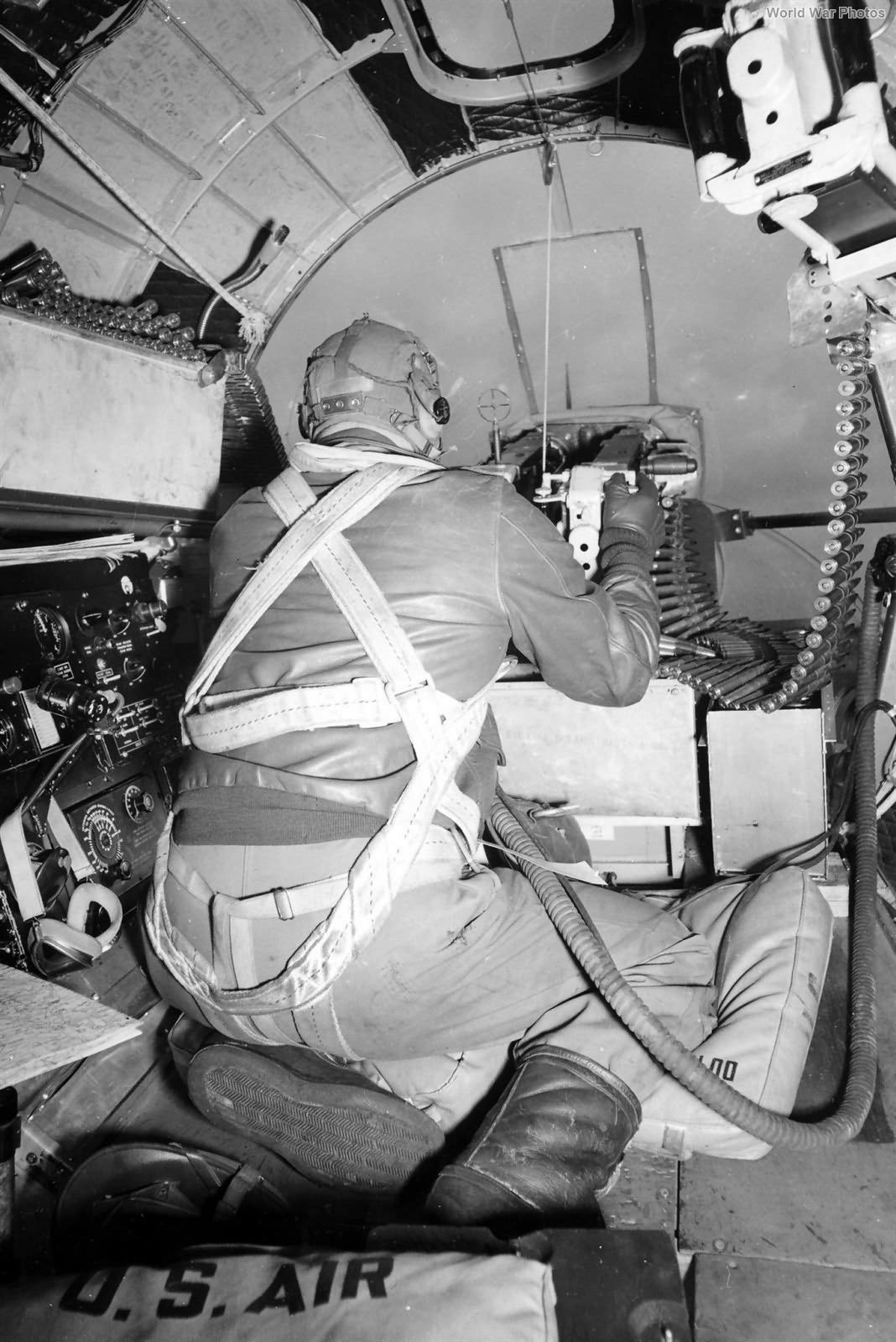
A togglier aboard a ‘destroyer’ modified B-17F. The plexiglass is modified a bit differently than Bearded Beauty above, as this B-17 was made after block F-40-BO, meaning her nose was delivered without dimples and ball mounts.
Note the lack of a seat here. Early B-17Fs had a bucket seat in the nose, with later variants having a posture seat. Regardless, both were often removed in the field, with bombardiers and navigators (whose position was designed for a posture seat) often simply sitting on the floor. Here the togglier is kneeling on a a pilot’s seat cushion.
A standardized nose gun finally entered service with the Cheyenne Modification Center designing a single gun assembly in February 1943, mounted in the center of the upper nose cone. Made of thick aluminum stamped with a drop hammer, this triangular design was braced against the ceiling and forwardmost bulkhead, with snap cords holding the gun when not in use. This design was common to the overwhelming majority of B-17Fs and even made it into factory installations by late-summer.
While the single-gun nose design was successful, it remained the B-17F’s most vulnerable position, even if only comparatively. Simply put, the B-17 was not an easy aircraft to attack. Up until this point, most of the war’s air forces equipped their fighters with combinations of .30 caliber MGs and 20mm autocannon, the idea being to combine the high rate-of-fire of the former with the greater hitting power of the latter. However, interceptions of US bombers found that, on average, it took twenty direct hits from a 20mm to down a single B-17 – and these were explosive shells. On 4 February 1943, the Luftwaffe began operating night fighters like the Bf-110 and Ju-88 against US bombers, the idea being that their heavier armament might be more effective. Eventually, heavier armed variants of the ubiquitous Bf-109 and FW-190 also entered service, the former later in February and the latter the following July, carrying .50 caliber MGs and, starting 28 July, 30mm autocannon.
Even if somewhat clumsy, the B-17F’s modified nose guns plugged an important gap which, combined with the box formation, meant that there was no easy way to attack US bombers. OLt Hans Philipp of JG1 phrased it this way:
Against 20 Russians trying to shoot you down, or even 20 Spitfires, it can be exciting, even fun. But to curve in towards 40 Fortresses, all your past sins flash before your eyes. And when you yourself have reached this state of mind, it becomes that much more difficult to have to drive every pilot of the Geschwader [group], right down to the youngest and lowliest NCO, to do the same.
An ace of some 206 aerial victory claims, Philipp was killed by a B-17’s tail gunner four days after writing this to his wife.
To break up US formations, air-to-air missiles were introduced on 21 May 1943. The idea behind these weapons was to spread the formation apart enough so that bombers could be attacked without the protective fire of others nearby. Said missiles were clumsy and lacked proximity fuses, so it was not until 27 September 1943 that a bomber was actually downed by one.
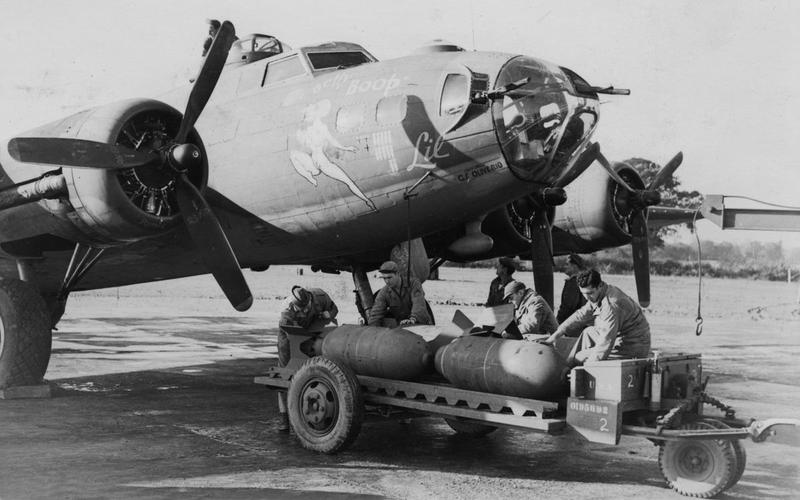
Li’l Betty Boop (42-30434, 390BG) with the center-mounted nose gun common to B-17Fs throughout the summer of 1943.
Li’l Betty Boop was lost on 25 February 1944 during Big Week over Regensburg.
Lucky Thirteen carried a setup identical to this aircraft.
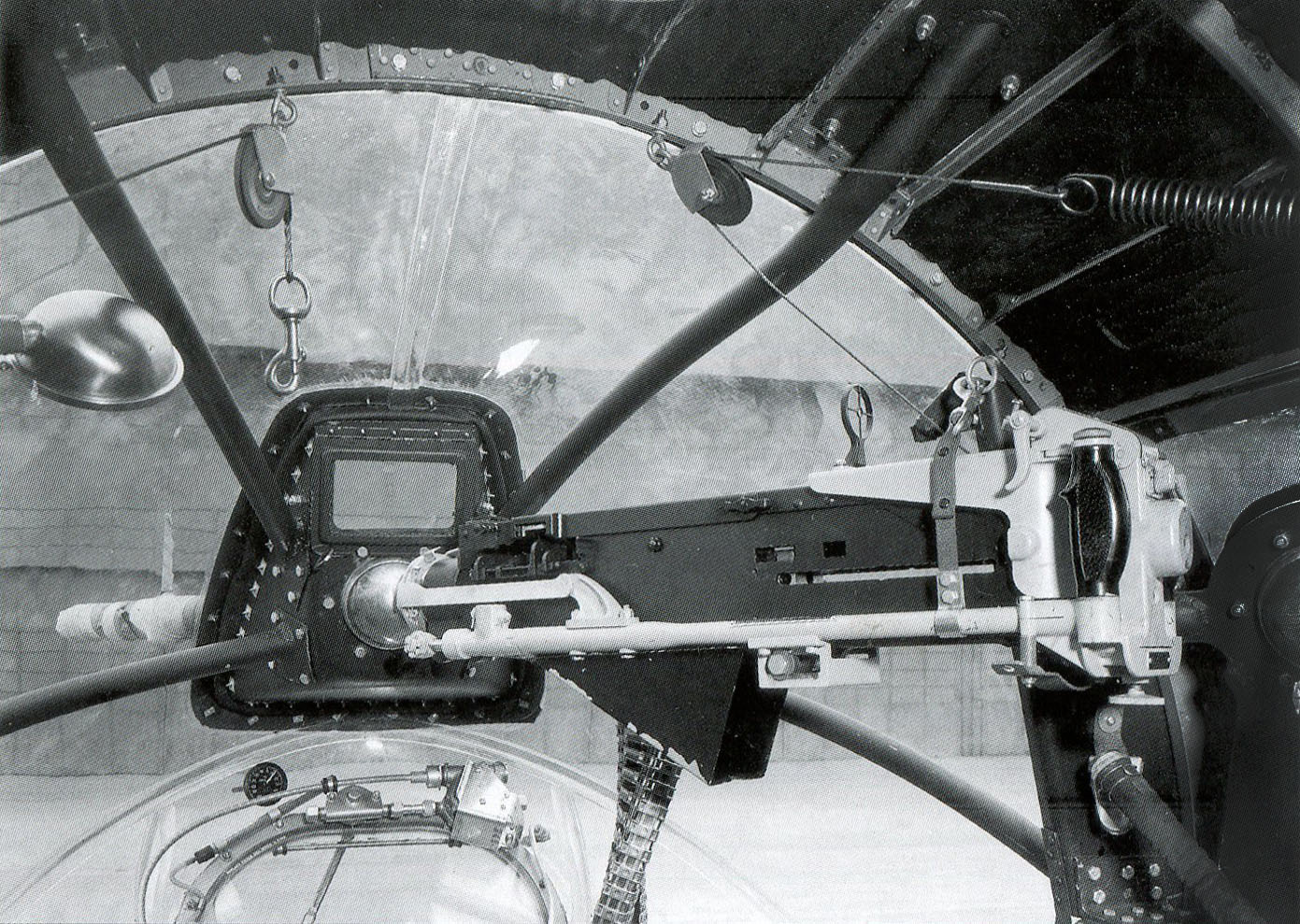
Manual image of a center-mounted nose gun.
A hopper has been added underneath the nose gun to deflect shells away from the plexiglass.
Lucky Thirteen carried a setup identical to this aircraft.

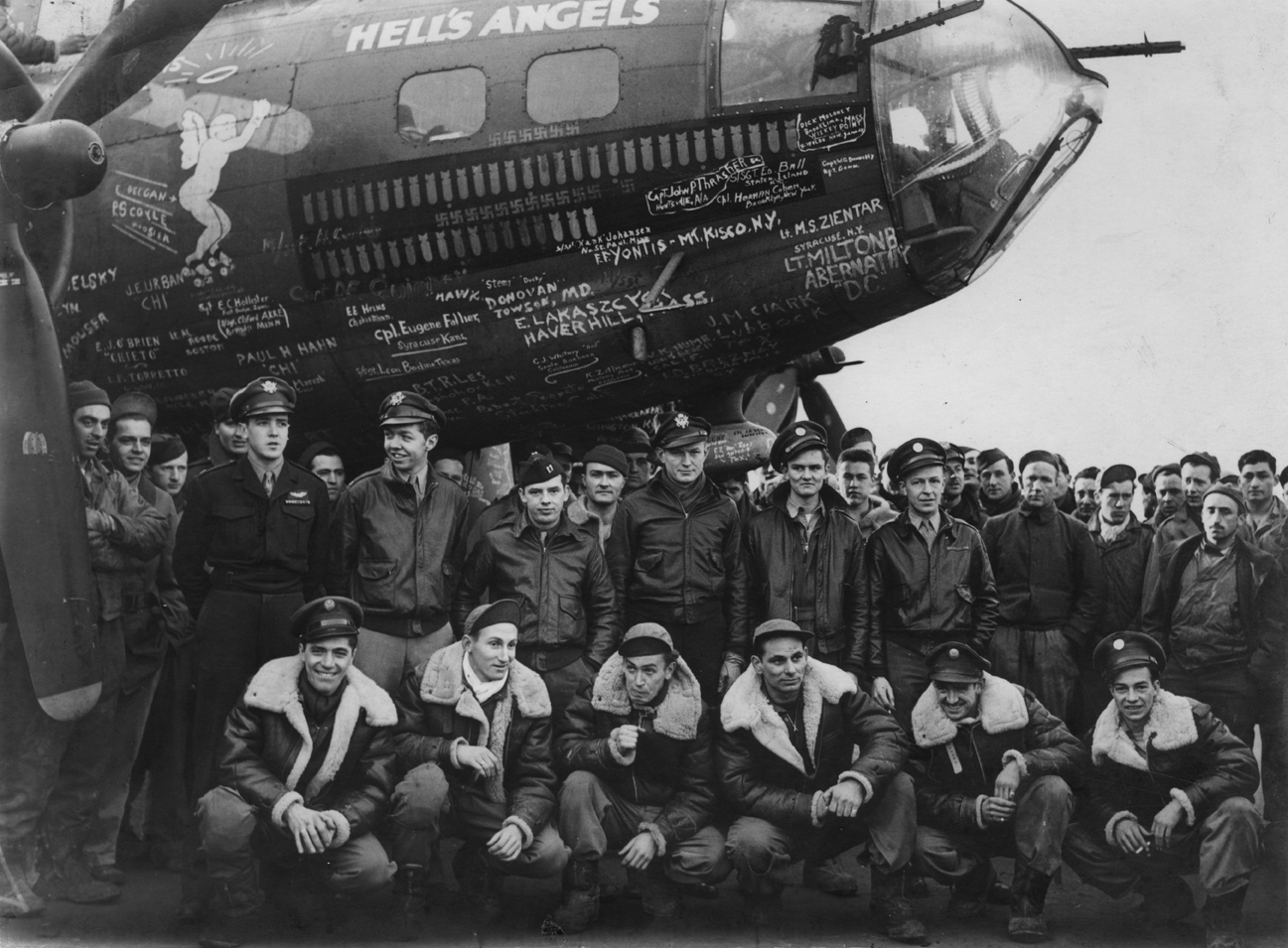
The famed Hell’s Angels (41-24577, 303BG), whose crew completed their combat tour just days before Memphis Belle (41-24485, 91BG) did the same. Unlike the Belle, the aircraft stayed in the ETO, flying an additional 23 missions with other crews before finally being sent back to the US.
During this period, her older, multiplace nose was replaced with the standard center nose gun mount.

Another interior shot of a B-17F with a single, center mounted nose gun. Based on the cheek windows, this aircraft is slightly older than Lucky Thirteen but, based on the oxygen system, younger than Hell’s Angels. Again, the bombardier’s seat has been removed and replaced with a pilot’s seat cushion.
Note the ubiquitous ammo boxes, made from old ammo shipping crates. It appears that the navigator’s seat was removed too, simply using one of these makeshift ammo boxes as a seat.
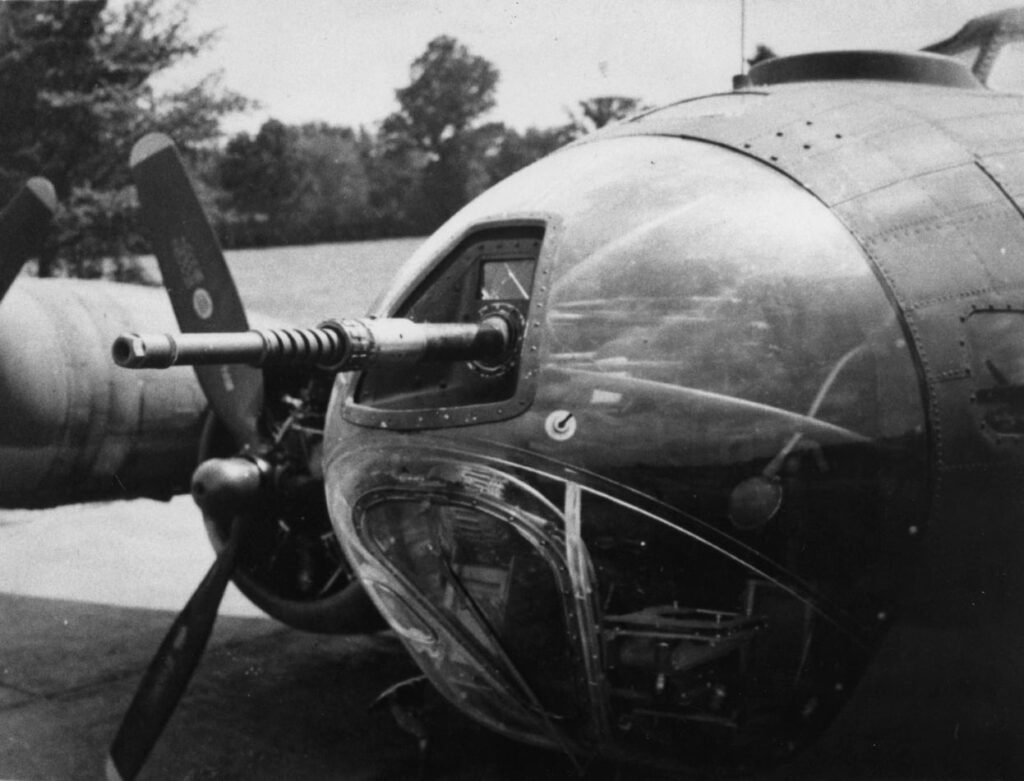
Bomber crews also felt that additional firepower was needed in the nose and airmen from the 385BG conducted a few impromptu experiments using borrowed 20mm autocannon. Here, one such 20mm is mounted in the nose of an aircraft equipped with the aforementioned center-triangle mount.
Multiple sources claim that this aircraft is Roundtrip Jack (42-5897) but a cursory glance at the cheek windows reveals that this is not the case.
Supposedly, the 20mm nose gun experiment was only used in combat once, on 15 August 1943, before higher ranks stepped in and put an end to it. The weapon was just not safe, the recoil being too much for the plexiglass nose.
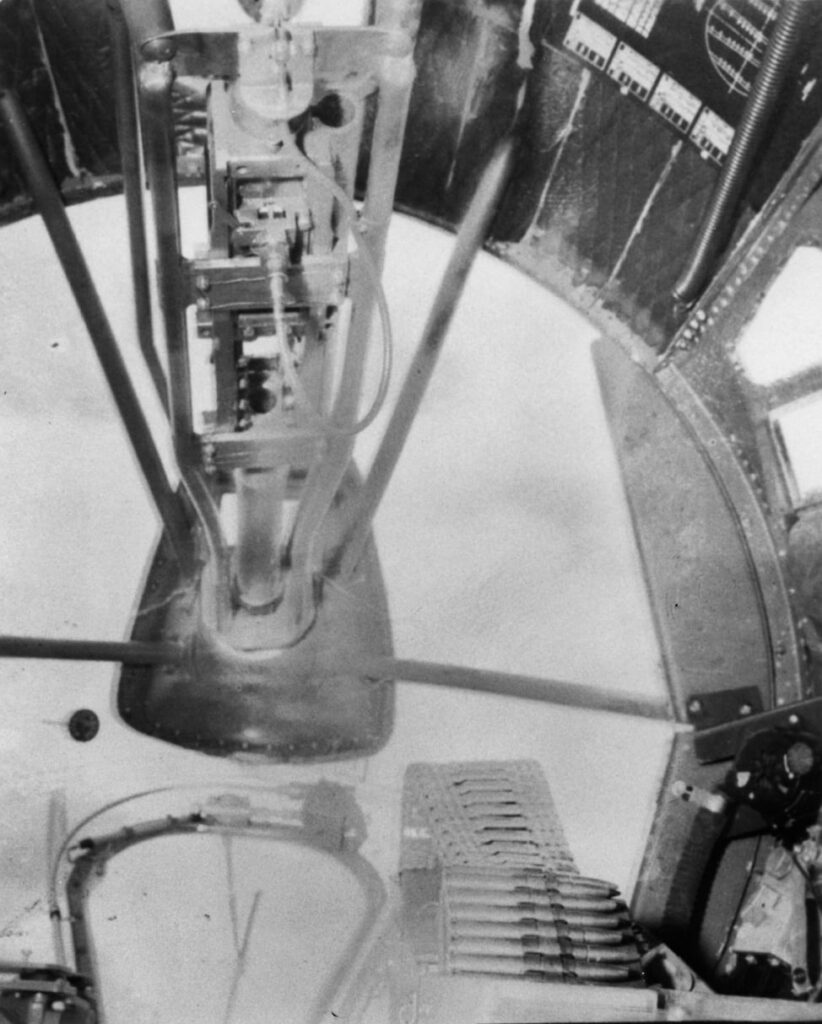
The custom gun cradle designed by 385BG ground crews to hold a 20mm in the nose of a B-17F.
As a side note, this is the first photo we have found to show the interior of a B-17F nose with slanted cheek windows. This style cheek window held its gun using a Type K-5 mount. We still need two for Lucky Thirteen – if you can help with this need, please let us know!

This nose gun bracket assembly came to us from the UK and is one of our project’s most prized pieces.
We are unaware of any other surviving wartime examples. This might be the only one left.
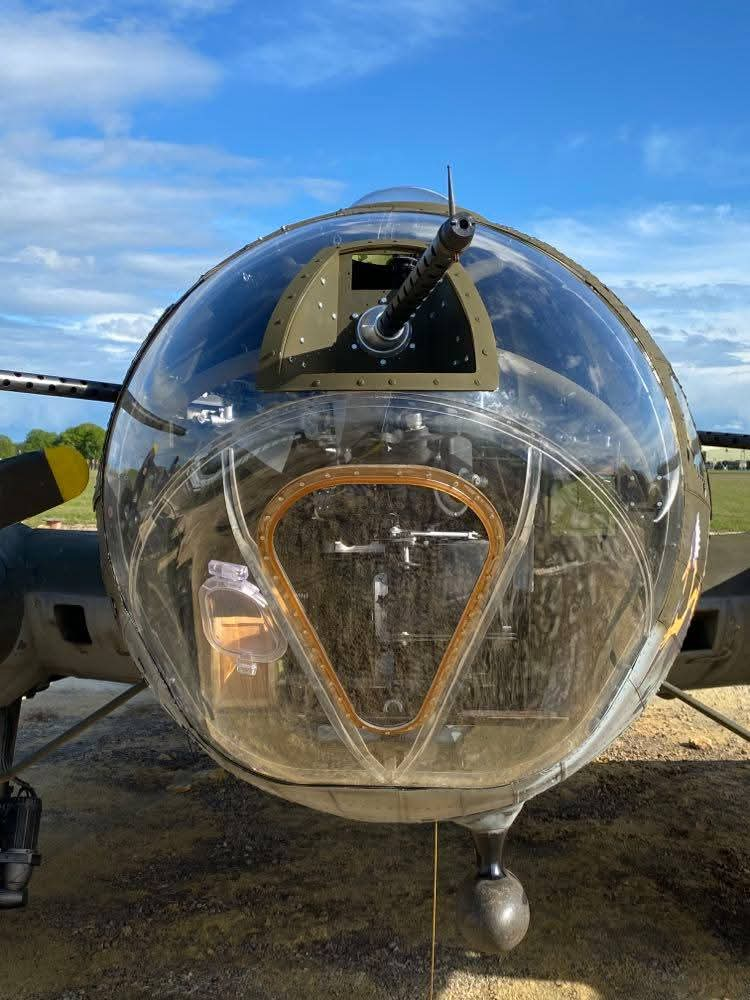
Hangar Thirteen provided the makers of the AppleTV series “Masters of the Air” with a template to recreate the center-type nose gun for their mock B-17Fs.
Nothing came out of our involvement with the series but it was still neat to see this piece in action.
The first iteration of the famous Bendix Type A-16 Chin Turret originally entered service with the experimental YB-40 escort gunship.
A product of the Air War Plans Division, the escort gunship concept remains highly misunderstood today. The idea was to create an escort stopgap until a solution could be found to extend the range of existing fighter aircraft. Tests with converted Martin B-26s and Consolidated B-24s showed little promise but the B-17 was converted with relative ease. The aircraft carried no bombs but was equipped with a far greater complement of weapons and armor, including hydraulically boosted dual waist guns, a Martin A-3 turret in the radio room, and a Bendix A-10 under the nose.
The Bendix A-10 was originally designed as a remotely controlled belly turret for the North American B-25. As was typical with such remotes, the turret was awkward to operate and had a frightening tendency to give the gunner vertigo. But to salvage the Army’s investment, the A-10 was modified to serve as a forward-firing emplacement on the YB-40. And here it did surprisingly well. Reports from the 92BG (who operated the YB-40) felt that the gunship offered no real advantage over regular B-17s but enthusiastically endorsed the new chin turret. It took time to create an effective control system, particularly one that was comfortable and did not interfere with the bombsight. The YB-40 began operations on 29 May 1943 and flew its last mission on 16 August 1943 – fittingly, the same day that the B-17G, with its standardized chin turret, made its first flight.

A Type A-10 Turret affixed to a YB-40 escort gunship.
The center window in the turret’s housing is a holdover from when it was originally used as a periscopic belly remote.
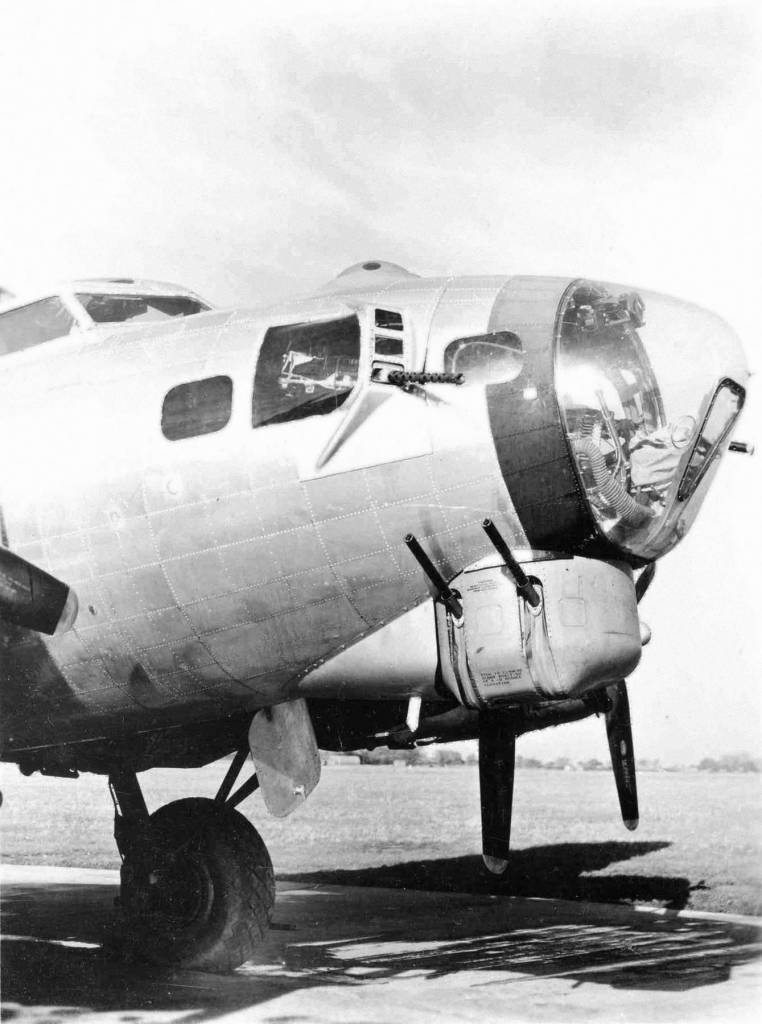
A Type A-16 Chin Turret aboard a B-17G.
The guns are pointed upwards as a safety measure. The turret is turned to the side for maintenance purposes, as the inside of the turret is accessed from the back.

The interior of a B-17G, showing the bombardier’s station above the A-16 Chin Turret.
The floor above the turret is plexiglass so that the bombardier can see down into the turret. While the floor is heavily scuffed, the ammo can for the right gun can be seen through the plexiglass here.
The A-16 Chin Turret brought an effective end to frontal attacks by Luftwaffe interceptors, and the increasing appearance of US escort fighters likewise ended the use of night fighters in the daylight role (US fighter pilots derisively referred to German night fighters as “meat on the table”). Throughout 1944 additional tactics and aircraft saw service as interceptors, notably Luftwaffe Sturmgruppen, the Me-163 rocket fighter, and the Me-262 jet fighter. But by that point, the tide had already turned. There was no going back.
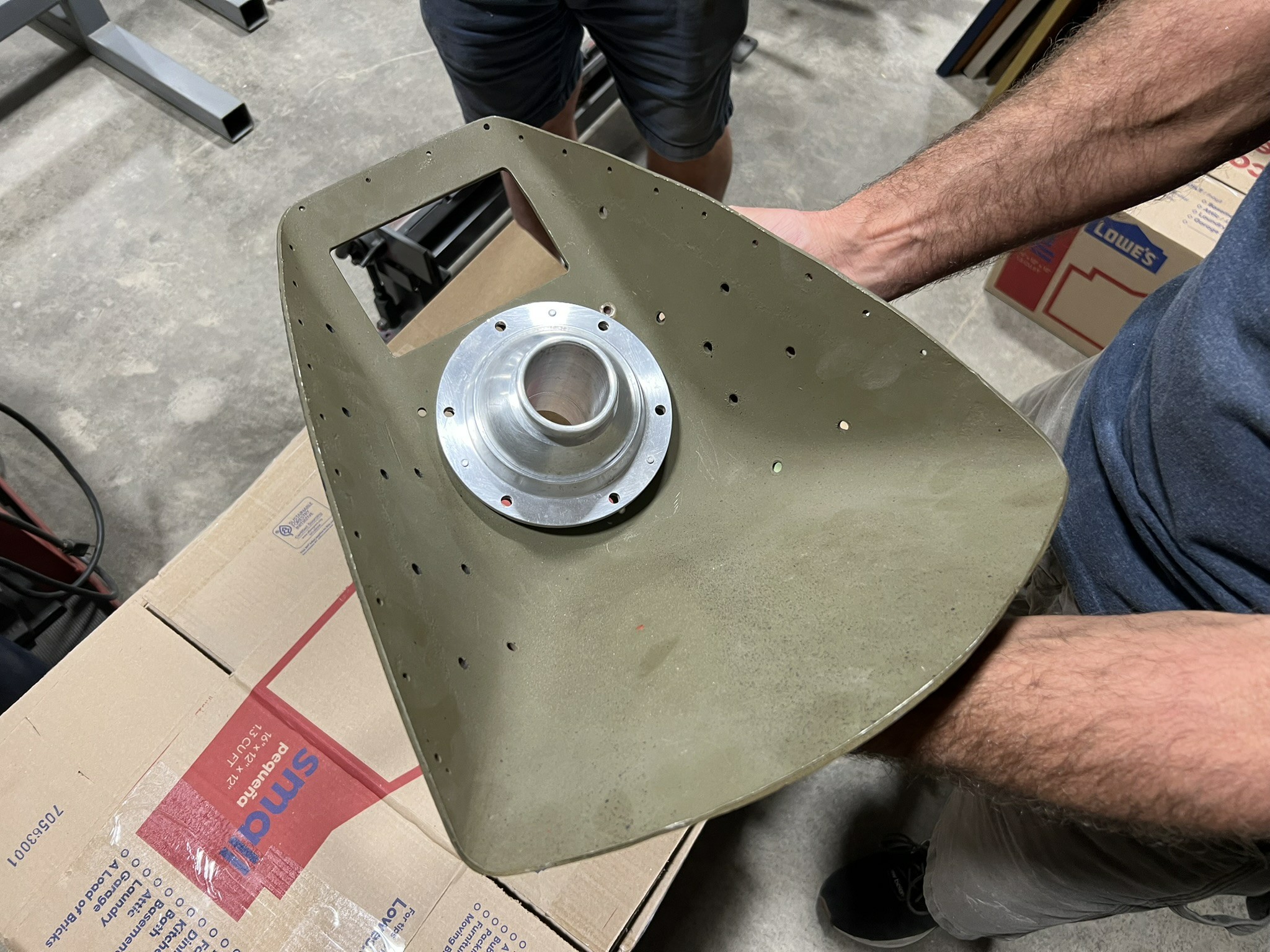
The newly arrived Type K-4 Ball Mount held against its future home in the original B-17F nose gun fixture.
Photo taken 9 May 2025.
The Hangar Thirteen Foundation is a 501c3 nonprofit charity dedicated to bringing back a B-17F representative of the bloody counter-air campaign of June 1943 through March 1944. Donations to this project are tax deductible. If you can spare a little to help this project, you can guarantee that you will see the results on Facebook and here on our website.
You can contribute through the Donate page or, to avoid a PayPal fee, you can send something via the mail to:
Gerad Allen Blume
Hangar Thirteen Foundation
442 Old Chalk Bed Road
Batesburg, SC 29006
Volunteers are also always welcome. In fact, you need not be an Asheville resident – you can work from home! Persons skilled with metal fabrication, machining, CAD modeling, metal casting, 3D scanning, and laser/waterjet cutting, are particularly helpful. Just reach out to us to get started.
Keep the show on the road!
